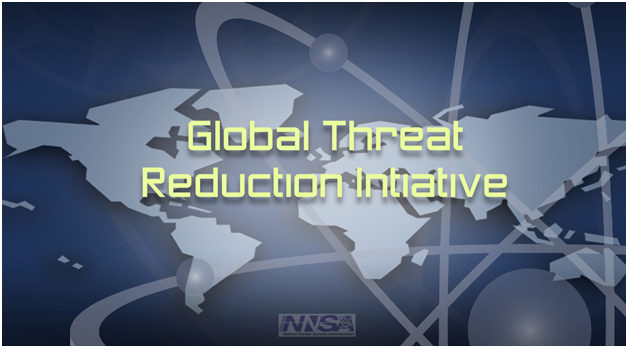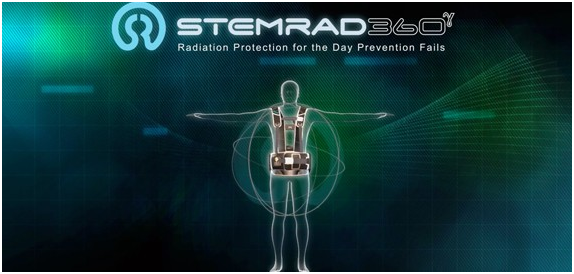
Blog
-
Geiger Readings for April 15, 2014
Ambient office = 114 nanosieverts per hourAmbient outside = 86 nanosieverts per hourSoil exposed to rain water = 77 nanosieverts per hourVine ripened tomato from Top Foods = 106 nanosieverts per hourTap water = 71 nanosieverts per hourFiltered water = 63 nanosieverts per hour -
Nuclear Weapons 72 – The Global Threat Reductrion Initiative
The Global Threat Reduction Initiative (GTRI) is a program of the National Nuclear Security Administration under the U.S. Department of Energy (DoE). Its mission is to “reduce and protect vulnerable nuclear and radiological material located at civilian sites worldwide.” The GTRI have been very successful to date. There are three programs that are being carried out by the GTRI.
The GTRI Convert program is dedicated to converting about two hundred research reactors and isotope production facilities around the globe from the use of highly enriched uranium (HEU) for fuel and targets to low enriched uranium for fuel and targets. This will help reduce nuclear threats because weapon-grade HEU will no longer be needed in these reactors and production facilities.
The GTRI Nuclear and Radiological Materials Removal Program removes and/or disposes of weapons grade uranium and other radiological materials. The removal and conversion of nuclear materials from Russian warheads, U.S. warheads, and other civilian sources of radiological materials is an ongoing part of this program. This will help reduce nuclear threats because weapon-grade nuclear materials will no longer be available to terrorists.
The GTRI Nuclear and Radiological Materials Protection program is intended to protect at-risk nuclear and radiological materials worldwide from threats of theft and sabotage until these materials can be secured by a more permanent security program. This reduces the nuclear threat by making these material more difficult, if not impossible, to obtain.
The U.S. DoE has releases a budget proposal for 2015 which would push the target date for the reactor conversion project from 2030 to 2035. The budget for the GTRI programs would be cut by about eighteen percent. At the same time, the Obama Administration is asking for an increase in funding for nuclear weapons research and production by seven percent. The U.S. DoE is also delaying the implementation of security measures for non-military sites in the U.S. that possess nuclear and/or radiological materials. The original completion date for this project was 2044 but the U.S. DoE has changed that to TBD.
Senator Dianne Feinstein (D-Calif.) attacked the plans to underfund and delay the GTRI programs while speaking at a Senate Appropriations Energy and Water Development Subcommittee hearing recently. She said, “This simply is unacceptable at the same time we’re pouring money into the modernization of certain warheads. It’s just unacceptable.” She was especially concerned about the slowdown in providing protection for the nuclear and radiological materials at non-military sites that would be a tempting target for terrorists bent on building a “dirty bomb.” She asked, “Are terrorists no longer interested in acquiring nuclear or radiological bombs for improvised nuclear devices and dirty bombs? I don’t understand how you can defend this budget on nonproliferation cuts.”
The U.S. Energy Secretary, Ernst Moniz defended the program cuts saying that they were unavoidable with the very tight budget situation forcing “tough choices.” He also defended the Obama Administration’s record of international nuclear threat reduction.
-
Geiger Readings for April 14, 2014
Ambient office = 58 nanosieverts per hourAmbient outside = 99 nanosieverts per hourSoil exposed to rain water = 111 nanosieverts per hourBartlett Pear from Top Foods = 101 nanosieverts per hourTap water = 121 nanosieverts per hourFiltered water = 93 nanosieverts per hour -
Radiation News Roundup April 13, 2014
Experts say that nuclear chain reactions may have lasted over 7 months at Fukushima after the tsunami. enenews.com
There are reports that people are dying suddenly in Fukushima. enenews.com
After a long impasse, Russia and India have reached an agreement for the construction of units 3 and 4 at the Kudankulam nuclear plant. nuclearstreet.com
Unit 1 at Arizona’s Palo Verde nuclear plant retroactively declared an unusual event Thursday stemming from a hydraulic line problem in November. nuclearstreet.com
-
Geiger Readings for April 13, 2014
Latitude 47.704656 Longitude -122.318745Ambient office = 64 nanosieverts per hourAmbient outside = 56 nanosieverts per hourSoil exposed to rain water = 70 nanosieverts per hourIceberg lettuce from Top Foods = 119 nanosieverts per hourTap water = 93 nanosieverts per hourFiltered water = 89 nanosieverts per hour -
Radiation News Roundup April 12, 2014
U.S.N. Reagan aircraft carrier crew took massive radiation hits from Fukushima and dozens have cancer. enenews.com
TEPCO is not going to analyze plutonium or uranium in bypass water from Fukushima site before discharging it into the Pacific. fukushima-diary.com
Two nuclear plants reported unplanned reactor shutdowns Tuesday after water level irregularities in steam generators. nuclearstreet.com
-
Geiger Readings for April 12, 2014
Ambient office = 97 nanosieverts per hourAmbient outside = 80 nanosieverts per hourSoil exposed to rain water = 86 nanosieverts per hourIceberg lettuce from Top Foods = 73 nanosieverts per hourTap water = 108 nanosieverts per hourFiltered water = 93 nanosieverts per hourHalibut – Caught in Canada = 103 nanosieverts per hour -
Radiation Protection 6 – New Israeli Belt Protects Against Gamma Radiation
I have blogged about the negative health effects of ionizing radiation in previous posts. Alpha particles are helium nuclei, beta particle are high energy electrons and gamma radiation consists of very high energy photons. All are generated by radioactive decay. Alpha and beta particles can be blocked easily and are generally most dangerous to the skin in the form of radiation burns and causing cancer in internal organs if ingested. Gamma radiation, on the other hand, can deeply penetrate into body tissue and damage internal organs was well as destroying critical bone marrow where blood cells are created.
Alpha and beta exposure can be blocked by hazmat suits with respirators. As long as the particles cannot touch the skin or be inhaled, the person wearing the suit is protected. Unfortunately, a lead lined suit that could protect the whole body against gamma radiation would weigh hundreds of pounds and could not be worn by most people. Up until now, something that would offer significant protect against gamma radiation and could be widely available to be worn by anyone has not existed.
Stemrad, an Israeli company, has just announced a new belt called the Stemrad 360 Gamma that protects against the worst damage caused by gamma radiation. The belt is partially made of lead and is intended to protect the pelvic area in case of nuclear emergency. The belt weighs about thirty three pounds and could be worn by most people if necessary.
Gamma radiation can cause severe damage to bone marrow and preventing damage to bone marrow is critical to ensuring survival of gamma exposure. Most of the renewable bone marrow is located in the pelvic area. The reproductive organs are also in the pelvic area. By protecting the pelvic area, the belt is able to increase the survivability of a person wearing the belt when exposed to gamma radiation. It is estimated that the belt can provide protection against up to one thousand rads of gamma radiation which could otherwise prove fatal. Although the new belt has not been tested on human beings exposed to gamma radiation, tests with dummies and radiation detectors indicate that it should offer some protection from gamma exposure.
During the Chernobyl emergency, the first responders and technicians who dealt with the disaster at close hand were expose to significant gamma radiation. Many underwent bone marrow transplants but still died early from the radiation damaged. There have been reports that workers cleaning up the Fukushima disaster are being exposed to dangerous levels of radiation. Experts have predicted that another major nuclear reactor accident is inevitable. If this new belt can perform as claimed, it should be rushed into production and distributed to all nuclear power plants in anticipation of the next major nuclear accident. Until we have powered exoskeletons that can allow a human being to wear a four hundred pound lead-lined suit, appliances such as this new belt are the best defense for those who may be exposed to high levels of gamma radiation.





